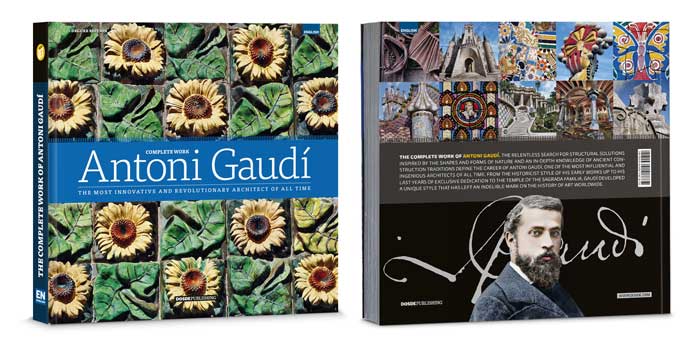What is the Güell Crypt?
Located in the municipality of Santa Coloma de Cervelló, a few kilometres outside Barcelona, the Güell Crypt is a key work in Antoni Gaudí’s career, given that it anticipates many of the construction solutions that the modernist architect would employ in the Sagrada Familia.
Despite the fact that it is an unfinished work, this religious temple has great historical and artistic value, as evidenced by its inclusion in 2005 on the list of Unesco World Heritage Sites.
Güell Crypt is amongst one of the numerous works that Gaudí carried out for the entrepreneur Eusebi Güell, with whom he collaborated throughour his life, carrying out works as well known as Güell Palace or Park Güell.
History of the Güell Grypt
With the construction of a textile factory in the locality of Santa Coloma de Cervelló, the industrialist Eusebi Güell embarked on an ambitious project in 1890: the Colonia Güell, an urban nucleus, which was at that time quite far from Barcelona, with an industrial estate, houses for its workers and social facilities with a place of worship.
To start with, a chapel was used for this purpose, but it soon became too small and Gaudí was commissioned to construct a church in 1898. The building work, however, did not commence until ten years later, due to the time it took the architect to study the daring structural as well as experimental solutions that it included. In fact, Gaudí used it as a laboratory of ideas for future application in the Sagrada Familia.
In this church, the architect Gaudí created a universe of lines based on ruled geometry, using a monumental model measuring four metres high that allowed him to design the structure without having to do a single calculation and it was inspired, for the first time in the history of architecture, by living beings.
Remaining loyal to his tendency to include symbolism, Gaudí projected the temple on a hill overlooking the landscape in order to symbolise the passing from an earthly to celestial plane. In 1914, Güell became ill and handed over the management of the estate to his children, whose lack of interest in the project led to Gaudí’s resignation when construction had only just got off the ground.
A robust and dynamic exterior
Because the Güell Crypt’s façades were not load-bearing walls (the columns and arches supported the entire weight of the building) Antoni Gaudí was able to freely express himself and planned the the façade walls to have an enclosing wall with pronounced recesses and projections that generated organic forms in tune with the structure of the inside of the crypt.
The large windows of oval, hexagonal and pentagonal forms that are scattered throughout the perimeter, along with the irregularly positioned bricks and the dark stones that decorate the entire façade, give the work a rustic air expressly sought for by the architect in order that the building would perfectly blend in with its surroundings.
The Güell Crypt interior
Gaudí planned the ground plan of the crypt to be of oval shape and divided it into three areas (defined by the uneven land) for different uses: nave, choir and private rooms. Four columns of basaltic stone, which withstand heavier loads, delimited a central space surrounded by a semi-circle of nine brick pillars.
Thanks to this structure, Gaudí could use an open plan design, which allowed a clear view of the altar from any angle. The only areas that were off limits to the congregation were the private rooms.
A complete book with all Gaudí’s works
Antoni Gaudí was considered one of the most important architects in history. He created an artistic language that is as surprising as it is inimitable.
The deluxe format of the book “The Complete Work of Gaudí” includes magnificent 3D illustrations, photographies and draws that provide a complete tour around the works of this universal architect.
In Dosde we have gathered together Gaudí’s complete work with detailed information in order to discover all the different facets of the architect, the influences that we can find in his works and the elements that inspired him.







